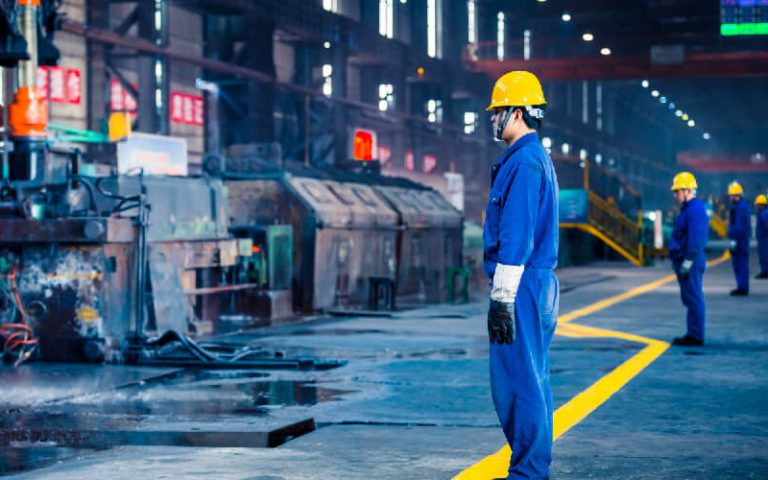The PROMAS model, multipurpose reaction cum distillation assembly created specifically for R&D chemists. It’s a stainless steel unit with all of the features R&D chemists need to perform different forms of reactions on a small scale.
Recognizing the challenges faced by R&D chemists in obtaining all of the data needed for scale-up and plant design from lab experiments (usually performed in glass apparatus), PROMAS Engineers Pvt. Ltd. decided to design and construct a model assembly that would make obtaining all of the necessary data a breeze. It can be complicated for a chemist to set up a glass assembly in the lab to begin his work. Working in a wide range of temperatures is not possible due to the glass assemblies. Glass reactors in a cylindrical form, which may reflect the shape of a standard S. S. reactor in a chemical plant, are often difficult to obtain. It’s also difficult to heat and cool quickly unless a heating mantle is removed first and a cooling bath is set up underneath the reaction flask, and vice versa. Before any work may begin, the glass assemblies must be meticulously assembled and securely clamped. They are unable to tolerate pressure. It’s nearly impossible to distil something in a small glass assembly at a high vacuum (say, 0.5 Torr) when stirring. Unless, of course, a corrosive reagent (which cannot be treated in stainless steel) is used for reaction, the glass assembly provides no additional benefit. Furthermore, a chemist cannot estimate the amount of energy needed to conduct a reaction or distillation using a glass assembly. He can obtain data on material balances, but evaluating the energy requirements when dealing with laboratory glass assemblies is extremely difficult for him. In short, except for the rea9ent nothing is the same when an experiment is performed in the lab in glass and the safe reaCtion is done on production level in stainless steel reactors. Chemists and chemical engineers also devote a significant amount of time to standardising the plant’s processes.
Until a batch process can be standardised in the factory, a lot of adjustments to the process parameters are often needed. Mostly the economic equations go disastrously wrong, and a method that looked great in the lab has to be ruled out.
To address the identified issues, Promas Engineers has developed a flexible reaction cum distillation assembly that is mounted on a steel frame and measures approximately 10’L x 6’W. The total height of the structure does not exceed 9 feet.
THE FEATURES OF THE ASSEMBLY ARE AS FOLLOWS:
- A 20-litre stainless-steel 316 cylindrical reaction unit with a stainless-steel jacket to circulate cold and hot medium. A suspended SS 316 coil is also provided to circulate hot oil through the vessel if the contents are to be heated above 140 C.
- The vessel has a torrispherical dish on top and bottom, which accurately represents the form of a normal reactor in the facility. The bottom dish is welded to the shell while the top dish is joined via a flange.
- The vessel has a variable speed stirrer with a turbine/anchor that is driven by a three-phase, flame-proof motor connected via a gearbox. The drive is a belt and pulley system.
- A bearing housing and an externally cooled mechanical seal make up the stirrer lantern assembly. The entire stirring assembly is perfectly balanced and placed on a cold pad on the top dish.
- A thermosyphon is included with the mechanical seal to keep it cold. To render viewing of the reaction in the vessel easier, the top dish has a light and a sight glass. A system is in place to quickly detach/attach the vessel to the top flange, allowing for the replacement of the turbine or anchor as needed.
The Vessel is Supplied With The Following Additional Attachments:
- A thermometer is a device that measures temperature (with a digital display)
- A pressure gauge with an isolating valve (dial type).
- A safety (pressure relief) valve.S S. No. 316
- An isolating valve on the charging nozzle.
- A dosing tank of 5 Litres capacity in S. S. 316 with CT) raging line, vent, vacuum attachment, and discharge nozzle on the top and bottom. This tank also has a sight and light glass so you can see how much liquid is in it. It is positioned at an appropriate height above the main reaction vessel so that the tank’s contents can be poured into the reactor by gravity.
- Between the dosing tank and the reactor, a glass visor is provided to manually see and change the addition rate.
- An additional nozzle on the top dish to help with solids addition.
- To make conducting hydrogenations or oxidations in the same reactor easier, a vapour nozzle with an isolating valve is included.
- A gas sparger with an isolating valve is provided to make it easier to introduce a gas under pressure, such as hydrogen.
- To make it easier to remove the contents from the vessel, a bottom outlet with a glass visor is installed.



